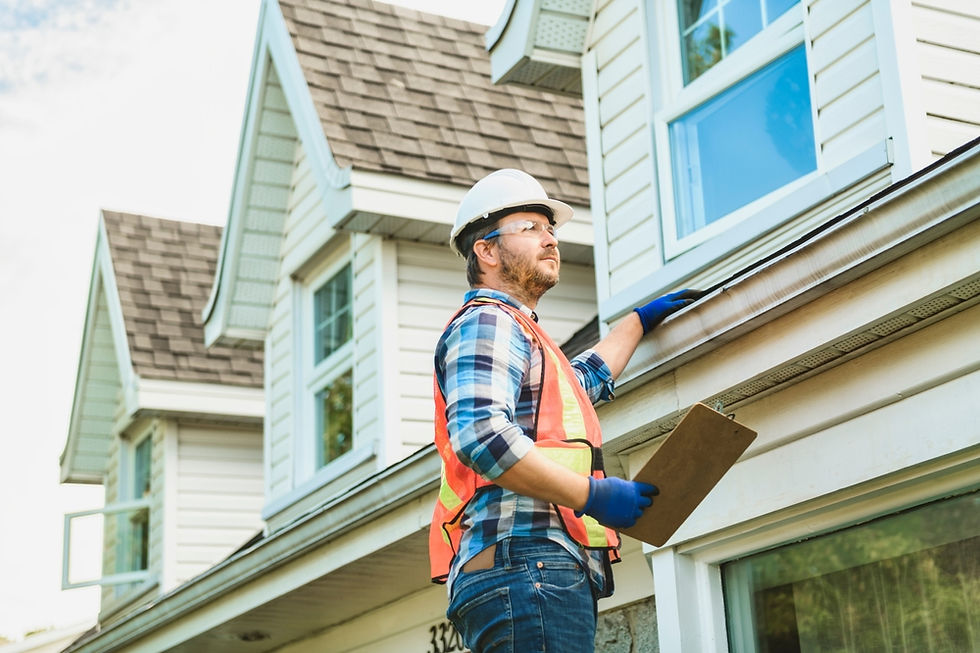5 Essential Tips for Building and Pest Inspections
- Lauren Bracy

- Jul 30
- 5 min read
Updated: Sep 17
A building and pest inspection is one of the most important steps in the property buying or selling process. Whether you're preparing to make a significant investment or list your home on the market, this inspection is essential for identifying potential issues before they turn into costly repairs. Despite its importance, many homeowners and buyers overlook key details that can greatly influence the outcome.
In this guide, you’ll discover 5 essential tips for building and pest inspections that will help you make confident, informed property decisions.
What Is a Building and Pest Inspection?

A building and pest inspection professionally checks a property for structural damage and pest infestations. Typically carried out before the finalisation of a property sale, it offers peace of mind for buyers and sellers alike.
The building component of the inspection includes the assessment of structural integrity, moisture conditions, roofing, insulation, plumbing, and additional relevant areas. Meanwhile, the pest component identifies signs of infestations like termites, rodents, or other wood-destroying organisms. Together, this combined property inspection helps uncover hidden issues that might not be obvious during an open home or casual walkthrough.
Real estate experts and legal professionals strongly recommend a pre-purchase building and pest inspection for every homebuyer. Not only does it reveal possible problems, but it also gives you the power to renegotiate terms or walk away if major concerns arise.
Tip 1: Choose a Qualified and Licensed Inspector
The first and most important tip is to always hire a licensed building inspector who also holds pest inspection accreditation. A qualified inspector brings expertise, experience, and a trained eye that allows them to spot even the most subtle signs of damage or infestation.
Ensure the inspector has:
Up-to-date licensing and professional qualifications
Insurance coverage (public liability and professional indemnity)
Experience in both residential building inspections and pest detection
Positive customer reviews and testimonials
It’s a good idea to request a sample report. This allows you to evaluate the detail and clarity of their findings. A reputable inspector will also use a property inspection checklist to cover every part of the structure, from subfloor to ceiling. Avoid inspectors who rush the job or offer vague conclusions.
Hiring a dual-qualified building and pest professional not only saves time but also ensures consistency in the reporting and reduces costs compared to hiring two separate specialists.
Tip 2: Time Your Inspection Strategically
When it comes to building and pest inspections, timing is everything. Ideally, you should schedule the inspection before signing the final contract or during the cooling-off period. This allows action to be taken based on the results without creating a legal obligation to make the purchase.
Here are some pre-purchase inspection tips to consider when booking:
Scheduling during daylight hours can improve visibility of external issues
Avoid rainy days, which can obscure moisture problems or pest entry points
If you’re a seller, consider pre-inspecting your property to fix problems beforehand
Remember, timing your inspection strategically isn’t just about convenience—it could save you thousands of dollars. A well-timed inspection may reveal deal-breakers or help you renegotiate the price based on the cost of required repairs.
Tip 3: Be Present During the Inspection
Although it’s not mandatory, being present during your building and pest inspection allows you to gain a better understanding of the property’s condition. You’ll get immediate feedback from the inspector, see the defects firsthand, and ask questions about potential risks or remedies.
Being there also gives you access to real estate inspection advice directly from a professional. You’ll learn which issues need urgent attention and which are minor concerns. For example, the inspector may point out pest infestation signs like wood dust, droppings, or hollow-sounding timber, which are not always listed in detail in the written report.
Many buyers also find it helpful to take photos or notes during the process, especially if they’re comparing multiple properties.
Tip 4: Understand Your Inspection Report
After the site visit, the inspector will deliver a home inspection report—this document is your roadmap to understanding the property’s condition. Unfortunately, many buyers don’t read these reports thoroughly or struggle to interpret technical language.
A good inspection report should include:
A summary of the findings
Photos of defects or pest activity
Descriptions of the severity of each issue
Recommendations for further assessment or action
Don’t hesitate to reach out to the inspector for clarification. Some reports may use generic language like “requires monitoring” or “minor defect”—always ask what this means in practical terms.
Reviewing the report provides information to assess the investment potential or risks associated with the property. If there are uncertainties regarding specific aspects, consulting a licensed property inspector or tradesperson may be helpful.
Tip 5: Know Your Rights and Next Steps

One of the biggest mistakes buyers make is not knowing what legal rights they have after receiving a building and pest inspection report. Based on the findings and contract terms, you could be eligible for the following:
Withdraw from the contract
Renegotiate the purchase price
Request the seller to complete repairs before settlement
Make sure your real estate contract includes a building and pest inspection clause. This clause protects you if significant issues are found. In the case of severe structural problems or active pest infestations, it gives you the option to terminate the contract without penalty.
If only minor issues are identified, you may still negotiate for a reduction in price or additional inclusions. Buyer’s legal rights vary depending on the region and the terms agreed upon, so consult with your solicitor or conveyancer before taking action.
Making the Most of Your Building and Pest Inspection
To truly benefit from your building and pest inspection, you need to treat it as more than a formality. Use it as a tool to make smarter property decisions. Here’s how to make the most of it:
Be actively involved from start to finish
Choose a qualified, experienced inspector
Time your inspection to align with legal and negotiation opportunities
Carefully review and understand the report
Take swift action based on findings
Your goal isn’t to find a flawless home—few exist—but rather to understand what you’re buying. Identifying potential problems early gives you the power to manage risks and costs effectively.
Conclusion
A building and pest inspection is one of the most powerful tools in the hands of a homebuyer or seller. It protects your financial investment, provides transparency, and strengthens your negotiation position. By following the five essential tips covered in this guide, you can approach your next property transaction with confidence and clarity.
From choosing a qualified inspector to understanding your rights, every step of the process plays a critical role. Stay proactive, ask questions, and ensure you’re fully informed—because when it comes to real estate, knowledge truly is power.









Comments